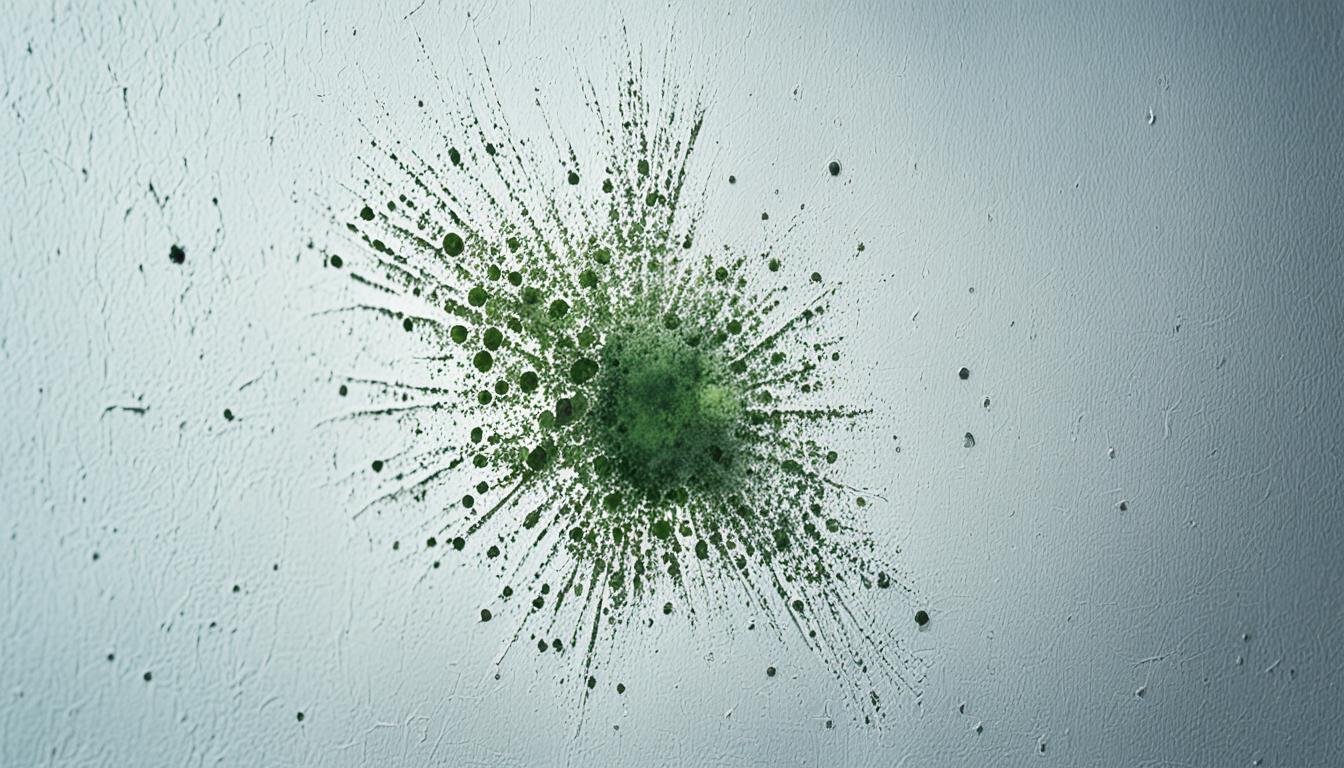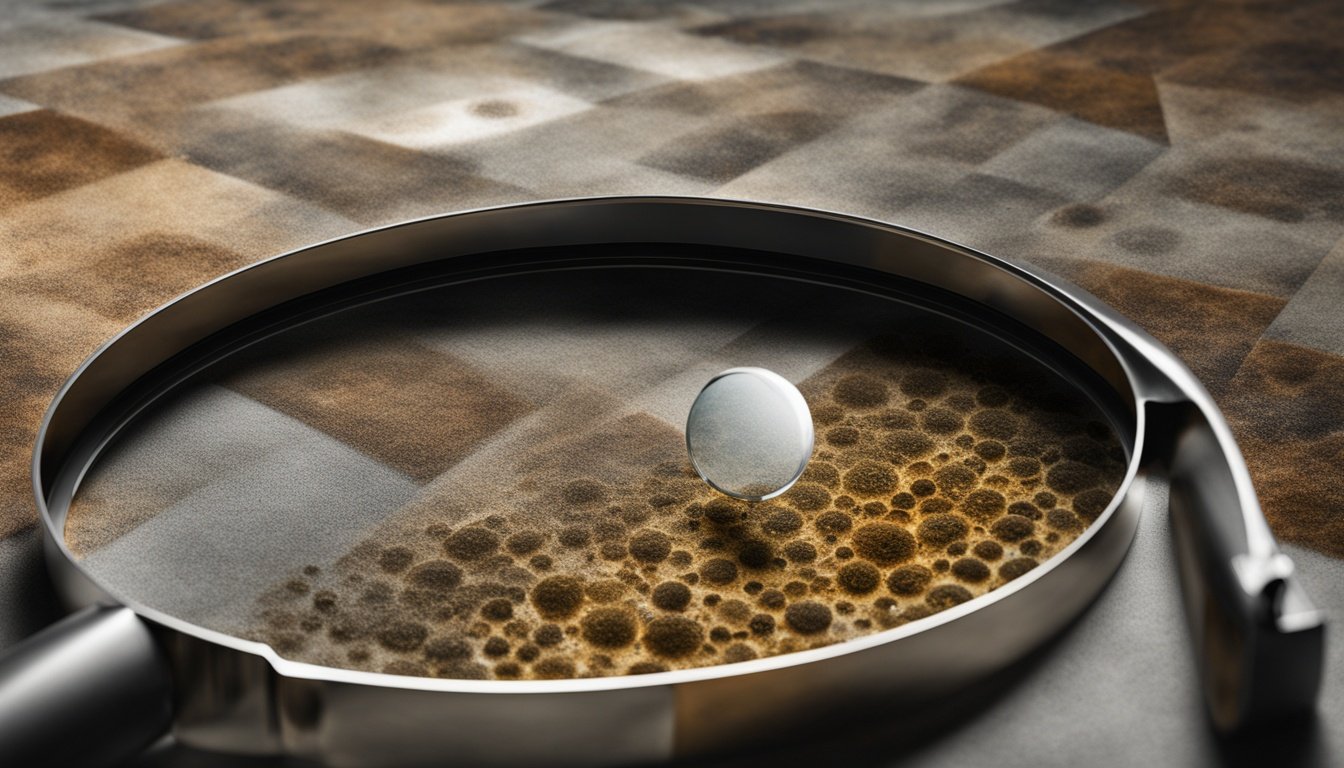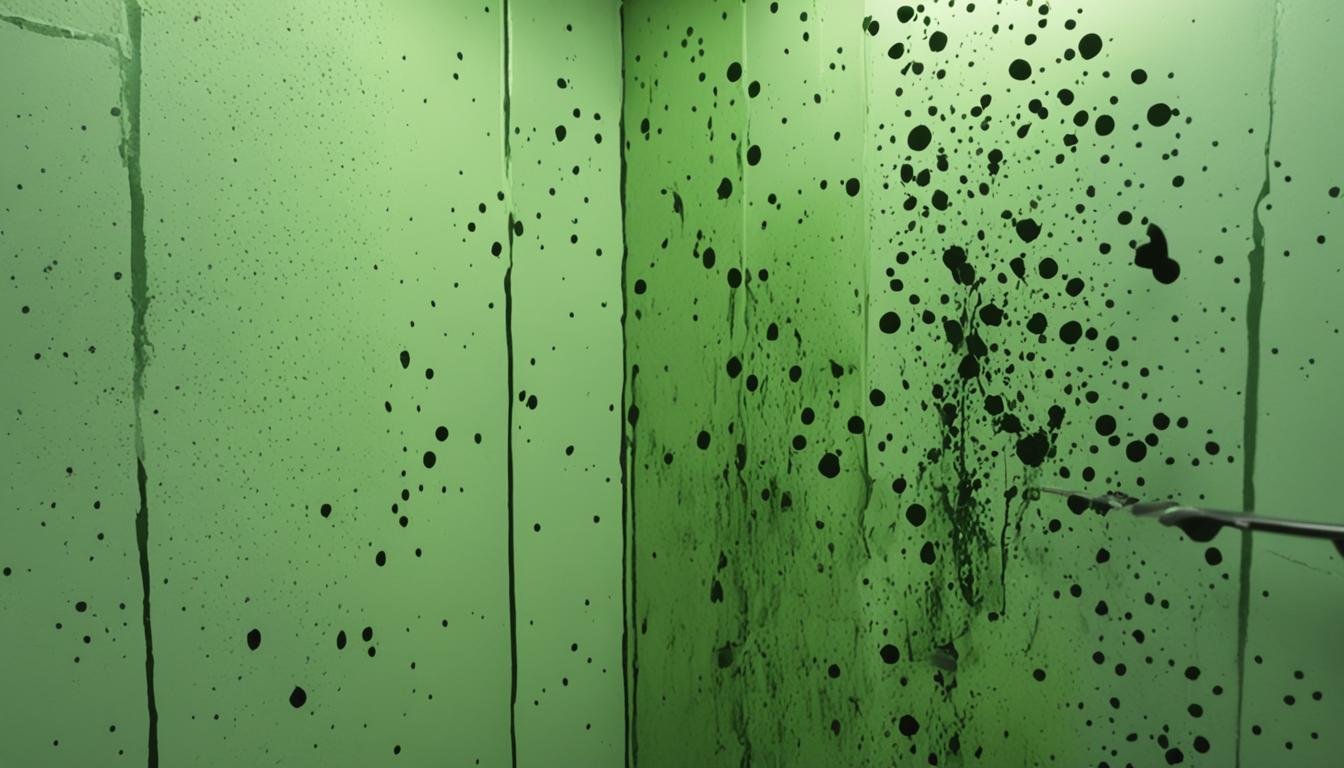Health Risks of Mold Behind Walls
Mold spores are everywhere indoors. They love damp, warm places. This means mold can grow behind walls and cause health problems. It can make you sneeze, have a runny nose, or have trouble breathing. In serious cases, it might lead to diseases like aspergillosis. Knowing about mold risks is key to keeping your home healthy and safe. Key Takeaways: Mold spores are present in all indoor environments and can grow on any surface with sufficient moisture. Mold can cause respiratory symptoms, such as sneezing, runny nose, and shortness of breath, as well as more serious illnesses like aspergillosis. Maintaining a humidity level below 60% and addressing moisture issues promptly are key to preventing mold growth behind walls. Hiring a professional for large mold cleanup or for individuals highly sensitive to mold is recommended. Regular cleaning, use of mold-killing products, and building maintenance can help reduce the risk of mold growth in your home. What is Mold and How Does it Grow? Mold is a type of fungus found both inside and outside buildings. It spreads by making tiny spores that float in the air. These spores can land on many things, like fabric, wood, or plastic. Mold grows best when it’s warm and damp. Types of Mold and Their Appearance Some molds you might see inside are Cladosporium, Aspergillus, and Penicillium. They come in different colors and textures. You might find them looking fuzzy, slimy, or powdery in colors such as green, black, or pink. Conditions for Mold Growth Mold likes to grow where there’s been water damage or where things don’t dry well. It also thrives on paper, cardboard, and even fabrics. Mold can make you sick not just from its spores but also from toxic gases and mycotoxins it releases. Common Areas Where Mold Grows Inside walls, where moisture and poor ventilation can create ideal conditions for mold growth Bathrooms, where humidity and standing water can contribute to mold proliferation Basements and crawl spaces, which are prone to dampness and limited airflow Around leaky pipes, windows, or roofs, where water intrusion can lead to mold accumulation On materials like drywall, ceiling tiles, and fabrics that can absorb and retain moisture Mold can hide inside walls but still be a threat. Even when dried, it can break into tiny parts that cause health issues. The most reliable way to keep mold from coming back is through professional cleaning and repair. Health Risks of Mold Behind Walls Breathing Problems and Allergic Reactions Mold behind walls can be risky, especially for people with allergies or weak immune systems. The tiny mold particles they release can make it hard to breathe and prompt allergic reactions. This can cause problems like wheezing, coughing, and feeling out of breath. Seeing mold, smelling must, or spotting water stains on walls might mean there’s mold. Breathing in its spores can lead to asthma and coughing. It might also make your skin, eyes, and nose feel bad. Mold is worse for kids, the elderly, and those with weak immune systems. Aspergillosis and Other Mold-Related Illnesses Mold can cause serious stuff like aspergillosis, a lung and sinus disease. It comes with symptoms like wheezing and trouble breathing. Other diseases tied to mold are hypersensitivity pneumonitis and sinusitis. Over time, mold can really hurt your body, especially if you have asthma or a weak immune system. To lower these risks, we must improve air flow, keep places dry, and get pros to handle mold. Health Risk Symptoms Vulnerable Groups Breathing Problems Wheezing, Coughing, Shortness of Breath Individuals with Allergies, Respiratory Conditions, or Weakened Immune Systems Allergic Reactions Skin Irritation, Eye Irritation, Nasal Congestion Children, Elderly, Immune-Compromised Individuals Aspergillosis Wheezing, Coughing, Shortness of Breath Individuals with Weakened Immune Systems Other Mold-Related Illnesses Hypersensitivity Pneumonitis, Sinusitis Individuals with Asthma or Compromised Immune Systems To deal with mold behind walls, fixing the moisture problem is key. Better airflow and professional mold cleanup are also essential. At sanbernardinowaterdamagerestoration.com, our Water Damage Pros team is ready to solve your mold issues for a safe home. Preventing and Addressing Mold Behind Walls Maintaining a mold-free home is critical for you and your family’s health. To stop mold from growing behind walls, manage moisture and ensure rooms are well ventilated. Fixing water leaks quickly is the first step. Using dehumidifiers to keep indoor humidity at 30% to 50% is a good idea. This makes it harder for mold to grow. Also, opening windows often can help air flow and lower the risk of moisture buildup. If you find mold behind walls, it’s best to call professional help. Contact Water Damage Pros – San Bernardino at 951-903-5429. They can remove the mold safely, fix the moisture problem, and stop future mold growth. Removing mold includes checking the area, keeping the mold from spreading, and using special cleaning methods. It also involves getting rid of contaminated materials the right way. Being proactive in preventing mold and quick in removing it protects your family. Remember, trustworthy services like Water Damage Pros – San Bernardino are key for a safe home. “Controlling moisture and addressing mold growth behind walls are essential for protecting the health and well-being of your family.” Keeping an eye out for mold and acting fast if you see it is very important. This can be shown by musty smells or visible mold. Working with expert mold remediation services like Water Damage Pros – San Bernardino at 951-903-5429 ensures mold problems are handled well. Conclusion Mold growth behind walls poses big health risks, especially for those with allergies or weak immunity. It’s important to know about different mold types, their favorite growth conditions, and their health impacts. This info helps homeowners prevent and deal with mold. Keeping moisture in check, making sure there’s enough air circulation, and fixing leaks fast are key to avoiding mold growth. If you find mold, reach out to a professional like Water Damage Pros – San Bernardino. They can safely remove the mold and find its source. These steps protect your …




